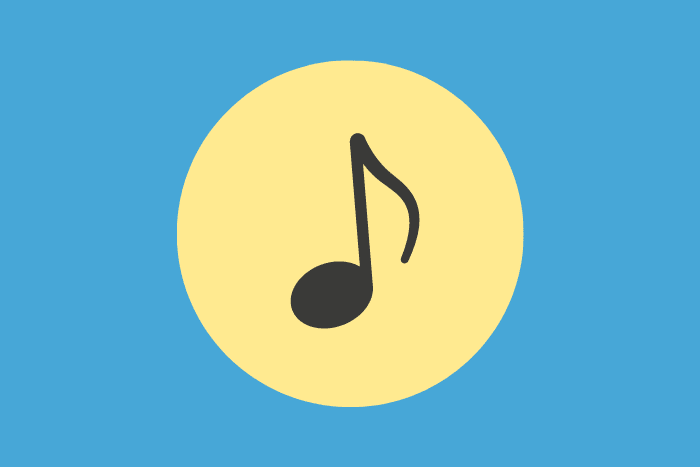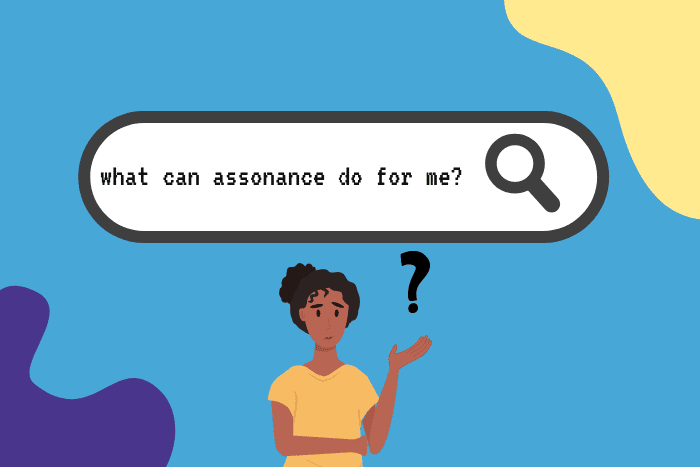Remember reviewing assonance examples in English class?
Or how about this gem from the classic film, My Fair Lady: “The rain in Spain stays mainly on the plain”?
Assonance, along with other literary devices like similes, metaphors, alliteration, consonance, and hyperbole, help make reading and writing a magical experience.
So let’s dust off the ol’ English lessons and add some glitz and glamor into your present-day writing.
And to help you do that, we’ve provided plenty of stellar assonance examples to help your writing shimmer and shine.
Let’s go!

What is Assonance?
Assonance is a literary device that focuses on repeating the same vowel sound in consecutive or nearby words.
It’s a technique that, when used well, can help enhance the mood of your creative writing, creating a sense of fear, humor, romance, action, suspense, playfulness, and more.
Assonance can also speed up and slow down the pace of writing, further intensifying the overall mood.
18 Inspiring Assonance Examples
Let’s get this show on the road, and dive into a series of assonance examples from celebrated literary works, songs, and a few famous examples you might recognize!
Assonance Examples in Literature

Here’s an example of assonance you’ve probably heard a million times before:
“O Romeo, Romeo, wherefore art thou Romeo?”
Notice how the repetition of the “o” sound creates a rhythmic, woeful effect that adds to Juliet’s complaint about her lover being the son of the enemy’s family.
Next, we have Edgar Allan Poe, who wrote a beautiful piece called “Annabelle Lee”, containing this alluring assonance example:
“And so all the night-tide, I lie down by the side of my darling — my darling — my life and my bride…”
See how the repetition of the “i” sound adds to the romantic mood of the piece.
Poe also wrote the line, “Hear the mellow wedding bells” in the poem called “The Bells” and the repeated short “e” sound helps ring a melody from those bells in your imagination.
Now let’s look at William Blake, whose famous poem, The Tyger, starts off like so:
“Tyger, Tyger burning bright in the forest of the night”
Not only do Blake’s powerful sensory words draw you into the scene, but the repetition of the “i” sound creates a lovely rhythm and sense of action.
What a way to start off a poem!
Another poet, Carl Sandburg, wrote in Early Moon:
“Poetry is old, ancient, goes back far. It is among the oldest of living things. So old it is that no man knows how and why the first poems came.”
The repeated “o” sound somehow just adds an aura of “ancientness” to his statement.
Can you hear it?
Or better yet, can you feel it?
Examples of Assonance in Poetry

Assonance is also a dazzling poetic device that adds liveliness, rhythm, and rhyme to verses.
See this piece by Kelly Rogers, The Cold Wind Blows:
“Who knows why the cold wind blows
Or where it goes, or what it knows.
It only flows in passionate throes
Until it finally slows and settles in repose.”
The repeated “o” sound makes you feel as if the wind is coming right past you, leaving you to wonder at where it comes from and where it’s going.
In William Wordsworth’s poem Daffodils he uses two groups of similar vowel sounds to create and emphasize a peaceful mood:
“I wandered lonely as a cloud
That floats on high o‘er vales and hills,
When all at once I saw a crowd,
A host, of golden daffodils;
Beside the lake, beneath the trees,
Fluttering and dancing in the breeze…”
Another example is Robert Frost’s poem, Stopping By Woods on a Snowy Evening:
“He gives his harness bells a shake
To ask if there is some mistake.
The only other sound’s the sweep
Of easy wind and downy flake.
The woods are lovely, dark and deep,
But I have promises to keep,
And miles to go before I sleep,
And miles to go before I sleep.”
The groups of similar vowel sounds create a sense of rhythm and movement, making you feel as though you are traveling along with it.
Examples of Assonance in Song

Rappers like use assonance all the time.
For example, take these lyrics from the song, Loud Noises, performed by Eminem and Royce Da 5’9″:
“On the real, it’s a wrap, how could you possibly stop the Apocalypse
When I’m atomic bombing the populous…”
Billie Eilish also uses assonance and rhyme in her lyrics, like in this excerpt from her song, Bellyache:
“Thought that I’d feel better
But now I got a bellyache…”
The repeated “e” sound adds to the mood of the song.
Disney songs like Aladdin’s, A Whole New World, use assonance to create a melodic rhythm:
Shining, shimmering, splendid
Tell me, princess, now when did
You last let your heart decide?”
OneRepublic wrote a song called I Lived, where the repeated “i” sound in the chorus emphasizes the point the singer is making in having done it all:
“I, I did it all
I, I did it all
I owned every second that this world could give
I saw so many places, the things that I did
With every broken bone, I swear I lived…”
Katy Perry’s popular song Firework also contains assonance, repeating different sounds throughout:
“Do you ever feel already buried deep?
Six feet under screams, but no one seems to hear a thing
Do you know that there’s still a chance for you
‘Cause there’s a spark in you…”
Other Famous Examples of Assonance

Some of the most well-known tongue twisters and proverbs also contain assonance.
Not only does assonance help improve their memorability, but it adds a touch of playfulness that’s hard to ignore!
For example:
- Peter Piper picked a peck of pickled peppers — note the repetition of the short “e” and long “i” sounds.
- Sally sells seashells beside the seashore — see the repetition of the short “e” and long “e” sounds?
- The early bird catches the worm — the repeated “i” sound in “bird” and “worm” adds emphasis.
- The squeaky wheel gets the grease — the repeated “ee” sound almost allows you to hear the wheel squeaking in your head!
Catchy, right?
The quick, repeated sounds flow off your tongue and deliver “sticky” sentences that you’ll never forget!
Switching gears, let’s end strong with another famous example:
The last few lines of William Wordsworth’s poem The World is Too Much With Us:
“Have glimpses that would make me less forlorn;
Have sight of Proteus rising from the sea;
Or hear old Triton blow his wreathèd horn.”
The long “a” and long “o” sounds finish the poem with a moody and rhythmic ring to it.
Why Use Assonance?

Using assonance — repeated vowel sound in successive words — makes your writing more interesting.
Don’t overdo it though, because then your writing will make it seem like you’re trying way too hard to be a clever, rhyming poet.
Make Your Writing an Experience
Assonance is like a spice that, when used well and in moderate combination with other literary devices like similes, metaphors, onomatopoeia, alliteration, hyperbole, and consonance, can add flavor to your creative writing.
It adds rhythm and makes it more memorable and enjoyable because the reader is rolling the words around in their mouth to see how it feels, how it sounds, and how it comes out.
Slow Down or Speed Up the Pace
Aside from adding flavor, assonance relieves the monotony of reading content that is stuffed with information and no “hooks” by which to organize and remember it.
A ton of content is like a stuffed closet — miserably messy. Assonance breaks it up by making the reader feel a sense of urgency in a scene full of suspense or slowing the reader down with more moody words.
Set the Scene Before it Unfolds
Assonance is a brilliant way to show, rather than tell, your reader more about what is happening.
You can create a crackly, electric atmosphere of anger in a scene long before the reader has read any words that describe a character as angry.
Assonance Examples Give You Options For Your Writing
Literary tools, rhyming words, figurative language, and other sound devices make it fun to create word-pictures for your readers.
Your writing will stand out in their memory and grab their attention, helping you achieve your goal for whatever you are writing.
Now that you have a clear idea of how to use this literary device to spice up your writing, it’s up to you to use it creatively.
The post 15+ Assonance Examples to Give Your Words that Razzamatazz appeared first on Smart Blogger.

No comments:
Post a Comment